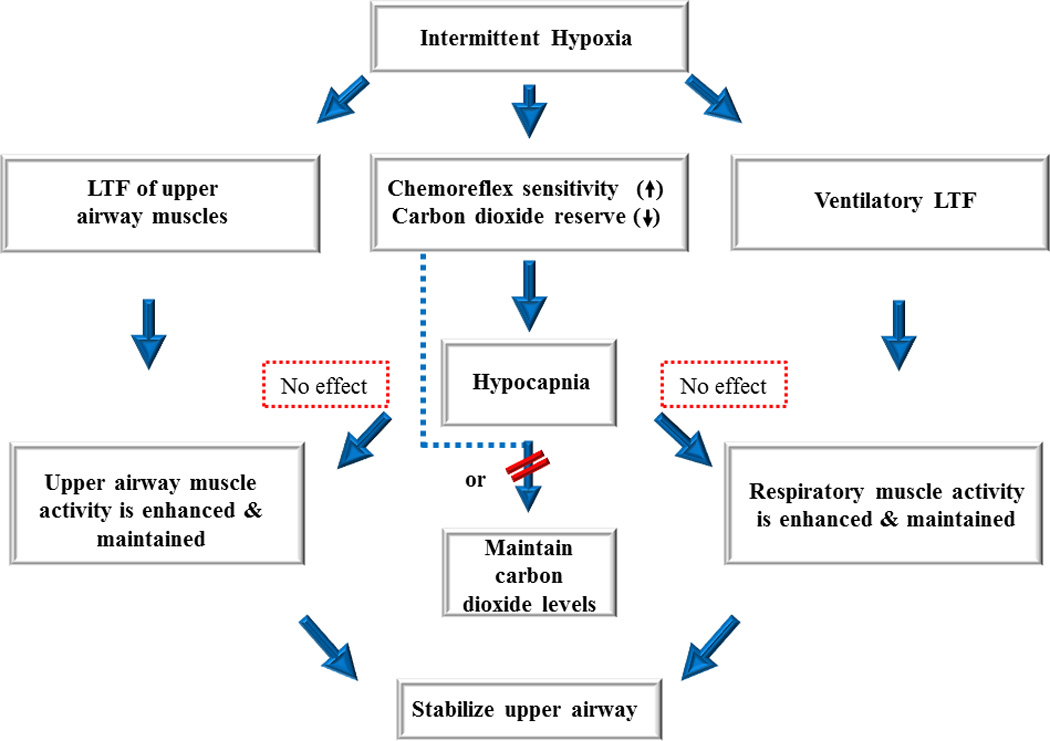Figure 3.

A schematic diagram showing that initiation of long-term facilitation of upper airway muscle activity and minute ventilation may serve to maintain upper airway patency and respiratory muscle activity. Ultimately, this integrated response promotes breathing and potentially mitigates the severity of apnea. In order for this scenario to occur long-term facilitation must persist despite reductions in carbon dioxide levels (i.e. hypocapnia) (see dotted red boxes). If long-term facilitation cannot persist in the presence of hypocapnia, as suggested by published findings, then alterations in chemoreflex properties must be minimized or eliminated (indicated by dashed line and diagonal red lines) to ensure the maintenance of desired carbon dioxide levels. Adapted from Mateika and Narwani (2009), Exp. Physiol. 91, 89–102.
